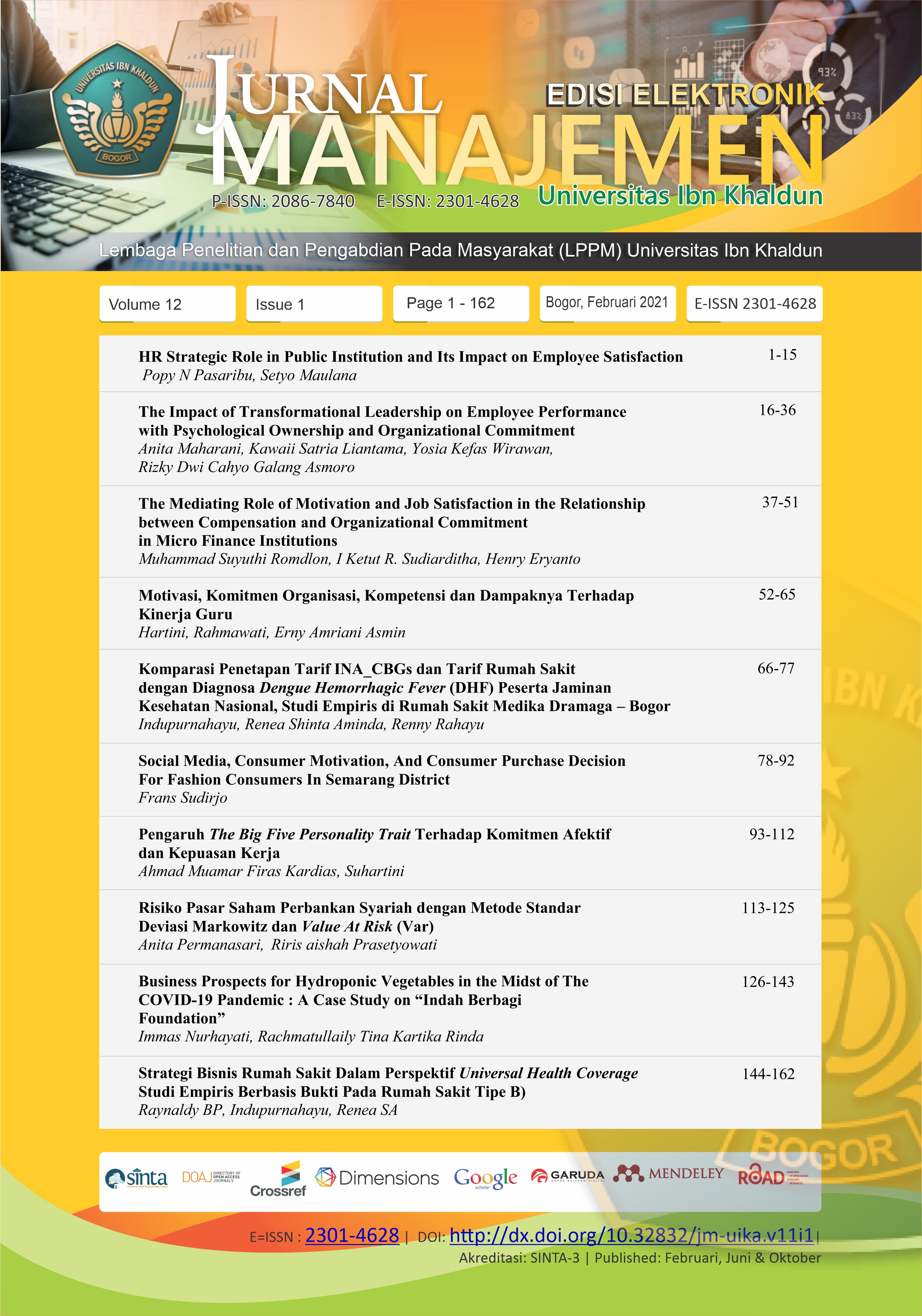Social Media, Consumer Motivation, And Consumer Purchase Decision For Fashion Consumers In Semarang District
DOI:
https://doi.org/10.32832/jm-uika.v12i1.3985Kata Kunci:
Social media, consumer motivation, buying decision.Abstrak
Abstract: This study aims to analyze the influence of social media on purchasing decisions through consumer motivation in fast fashion consumers in Semarang Regency. This study uses quantitative methods as many as 100 respondents were determined using a census. Data were collected using a questionnaire and processed using partial least squares. The results showed that social media had a positive and significant effect on purchasing decisions, consumer motivation had a positive and significant effect on purchasing decisions and social media had a positive and significant effect on purchasing decisions.Referensi
Ahmad, BR (2018). These are the brands chosen by netizens in 2018. Ekbis.https: //www.warta-onomi.co.id.
Anna, KL (2017). Instagram, social media is worst for mental health. Life Style. Retrieved March 15, 2018, from http: //www.kompas. co.id.
Cakir, F., Cakir, M., & Eru, O. (2013). The effect of the social media on young consumer consumption expenditure. International Journal of Social Sciences and Humanity Studies, 5 (2), 86–96.
Jashari, F., & Rrustemi, V. (2017). The impact of social media on consumer behavior. Journal of Knowledge Management, Economics and Information Technology, 7 (1), 1–14.
Ghozali, I. (2013). Multivariate Analysis Application with SPSS Program. Semarang: Diponegoro University.
Gul, MS, Shahzad, H, Khan, MI (2014) The relationship of social media with fashion cons- ciousness and consumer buying behavior. Journal of Management Info, 1 (2), 12-20
Khatib, F. (2016). The impact of social media charac- teristics on purchase decision empirical study of Saudi customers in Aseer Region. International Journal of Business and Social Science, 7 (4), 41–50.
Khuong, MN, & Duyen, HTM (2016). Personal factors affecting consumer purchase decision towards men skin care products - a study in Ho Chi Minh City, Vietnam International Journal of Trade, Economics and Finance, 7 (2), 44–50.
Kozinets, R. (2010), The Field Behind the Screen: Using Netnography for Marketing Research in Online Communities, Journal of Marketing Research, Number 39, pp. 61-72;
Madni, GR (2014). Consumer's behavior and effectiveness of social media. Global Journal of Management and Business Research:E Market- ing, 14 (8).
Mangold, WG and Faulds, DJ (2009). Social media: The new hybrid element of the promotion mix. Business Horizons, 52, 357-365
Marwahid, H. (2012). Hedonism and youth.Lifestyle. http://www.kompasiana.com.
Mccoy, D. (2017). Top fast fashion brand in United States.http://www.Chainstoreage.com.
Mega, A. (2017). The development of fashion trends in Indonesia. Lifestyle. http: //www.kompasia- na.com.
Sudha, M., Shenna, K. (2017). Impact of influencersin consumer decision process: the fashion industry. SCMS Journal of Indian Management, 14–30.
Sugiyono. (2016). Quantitative Research Methods, Qualitative and R & D. Bandung: PT Alfabeta.
Wang, YT (2010). Consumer behavior characteristics in fast fashion, 8-46.
Unduhan
Diterbitkan
Cara Mengutip
Terbitan
Bagian
Lisensi
Authors who publish with this journal agree to the following terms:
- Authors retain copyright and grant the journal right of first publication with the work simultaneously licensed under a Creative Commons Attribution-NonCommercial-ShareAlike 4.0 International License that allows others to share the work with an acknowledgement of the work's authorship and initial publication in this journal.
- Authors can enter into separate, additional contractual arrangements for the non-exclusive distribution of the journal's published version of the work (e.g., post it to an institutional repository or publish it in a book), with an acknowledgement of its initial publication in this journal.
- Authors are permitted and encouraged to post their work online (e.g., in institutional repositories or on their website) prior to and during the submission process, as it can lead to productive exchanges, as well as earlier and greater citation of published work (See The Effect of Open Access).











